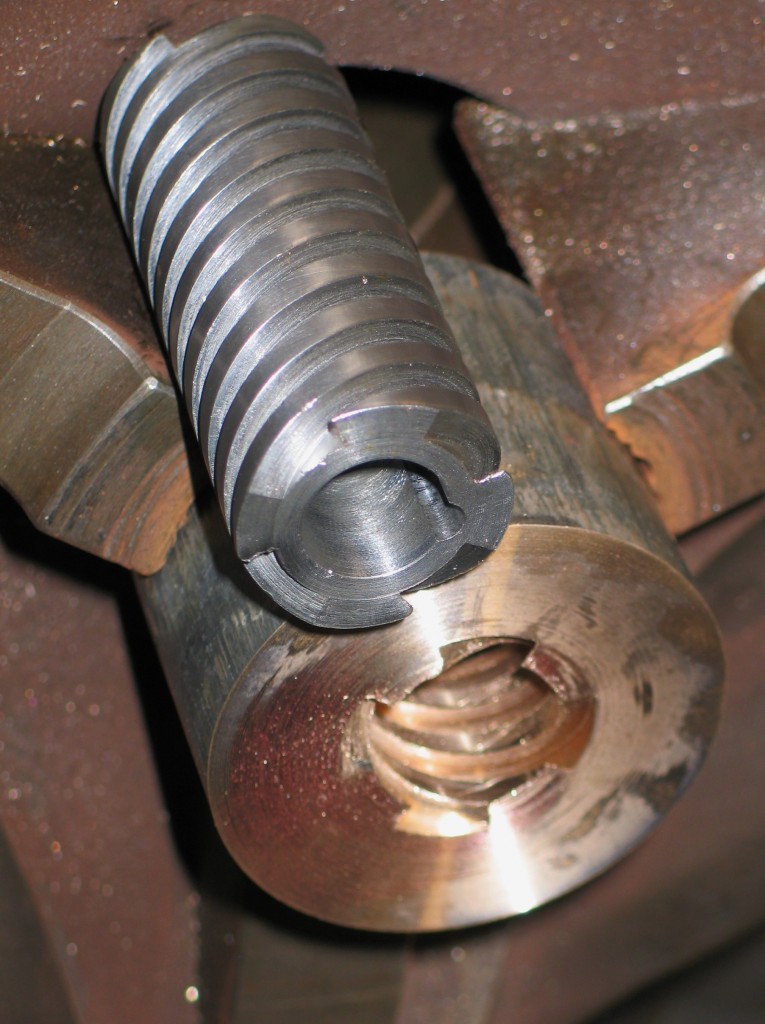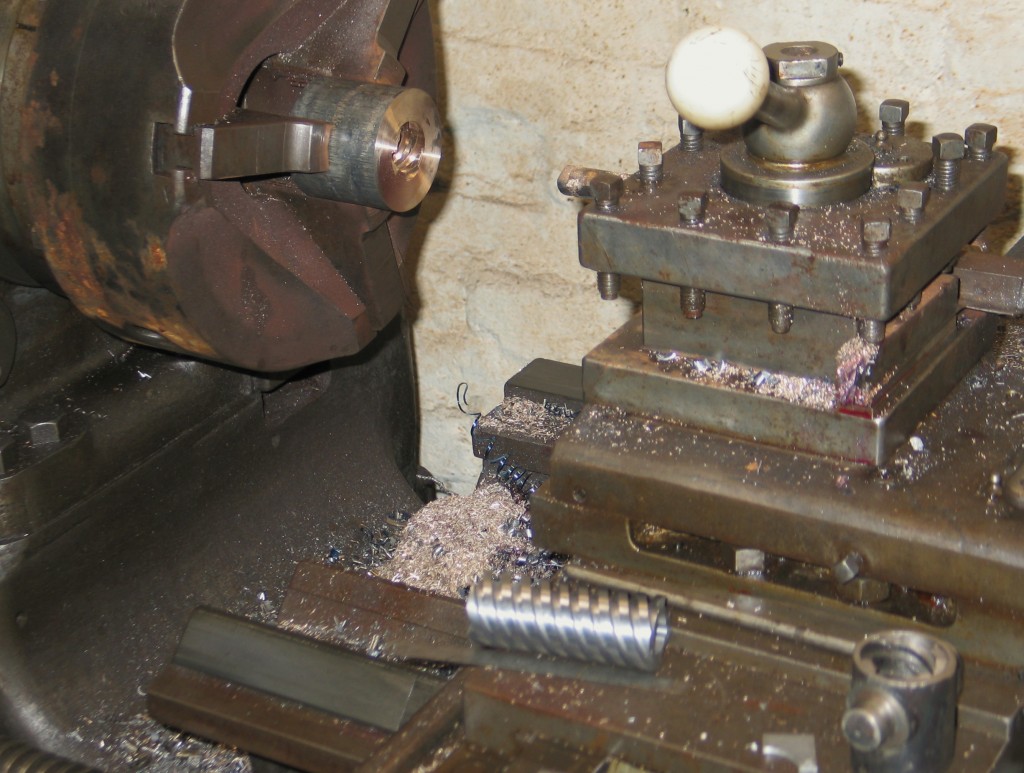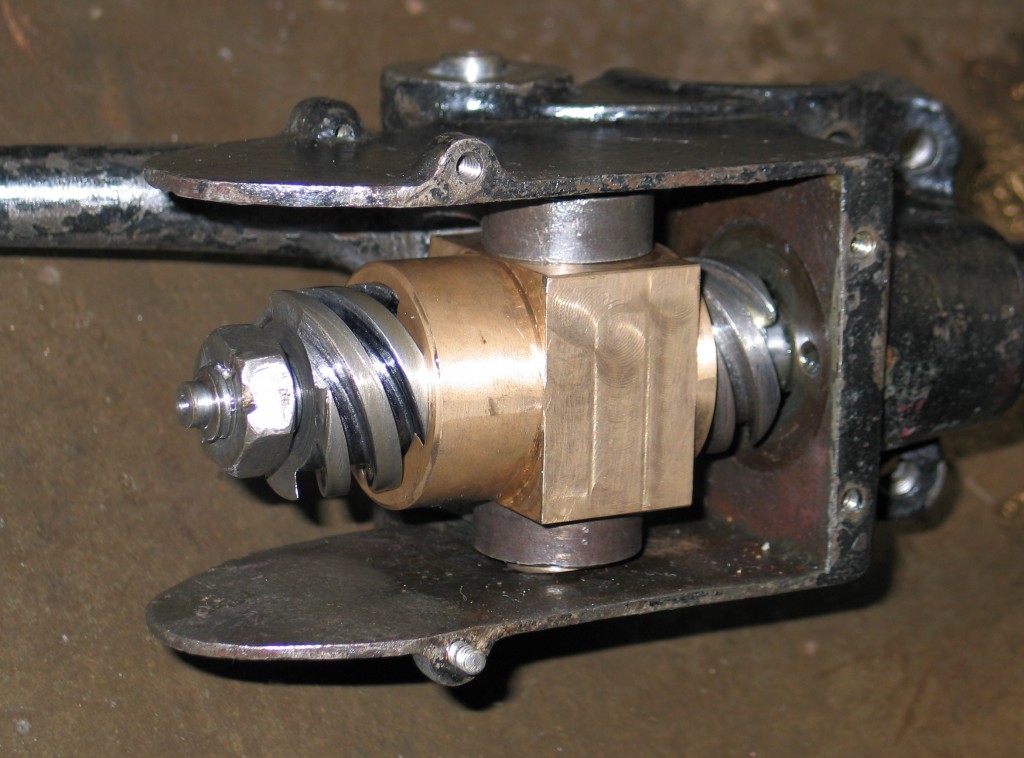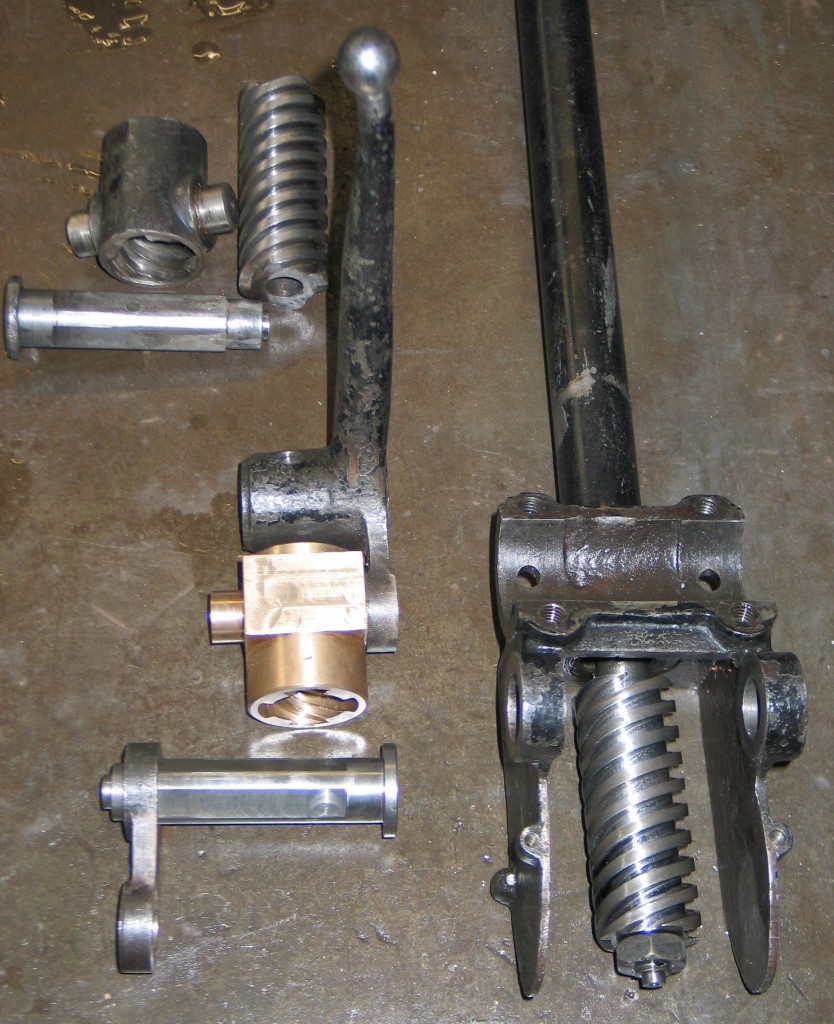
1. Close up of the thread as it is prepared for a final cut.
I am not going to go into to much detail regarding cutting threads on a lathe because its boring and i want to keep you, the reader interested in this short article about cutting or generating a four start thread on my Dean, Smith and Grace (D.S.G) lathe.

2. Screw cutting on the D.S.G. – you can see the female part of the thread held in the three jaws chuck & the cutting tool held in the turret slide.
The D.S.G. as it is known, was in its day it was the Rolls Royce or Brough Superior of lathes and I am proud to own one. They are awesome in the coarse pitches they can achieve.
The pitch of a thread is measured from the peak or apex of one thread to the next thread apex. If we look at a multitude of these peaks or apexes in a line on a shaft of metal we will see a thread or screw.
The D.S.G. lathe at my work can easily cut a thread or screw or spiral grove on a round piece of metal bar by turning the chuck, the chuck is the part of the machine that holds or grips the metal and turns it in a rotary fashion.

3. The completed steering rack assembled.
The slide is the part that holds the cross slide that holds the turret slide that holds the cutting tool that is going to cut the thread or screw.
There is a lot of calculations in making the slide do what you want it to do because the slide is operated by what are known as back gears.

4. The new steering rack conponents shown next to the old worn ones.
By arranging these back gears we can select what coarseness of the thread we require in relation to the rotation of the chuck. Rather than opting for calculations and maths on this particular job, i save the time by using trial and error until i get the coarseness of the thread that i require.
The thread or screw on the shaft in this case had to match a thread or screw that had to be made inside a bored out piece of bronze tube. The bronze tube, which would become the nut after screw cutting would be made after cutting the screw on the shaft. These two parts would match each other as the pitch set on the lathe would stay the same.
The pitch reqired for both parts were, as i was working from worn out original pattern parts and had to replicate them, was about a movement of 4inches on the side to one turn of the chuck.
Out of interest, the coarsest pitch i have attained on the D.S.G is one turn of the chuck that will give 32inches of movement on the slide, this is coarse enough for refling gun barrels. to cut multiple coarse threads we need to set the cross slide dial to zero, “Remember that the cross slide holds the turret slide that holds the cutting tool” to set the zero we need to get the chuck rotating and put the machine in gear so that the slide starts moving, as the cutting tool starts to pass over the metal we can stop the machine but leave it in gear and adjust the tool so it just touches the surface of the part that has stopped rotating. Once this is done we can set the dial to zero.
When the zero is set i turn the machine back on and put it in reverse and then put it back into forward drive with .020 inches onto the zero dial to take the first cut on the first thread of the four start thread.
Once this thread is cut at full depth we now look at the turret slide dial which had also been set at zero but not mentioned previously. The turned slide dial has to be turned to a given amount and then the whole operation starts again until the second thread is finished. Repeat for third and fourth thread until the four start screw is finished. All that is needed now is to run a file along the shaft edges of the screw cut until completely free of burrs.
The bronze nut is made in the same fashion but with a different tool that will cut threads internally.
A difficult worm or thread that i have made was a six start thread for a laboratory.

I worked with a few DSG lathes when serving my Aprenticeship 40+ years ago. They were getting very Old even then but were still very accurate. Swinging on those big levers to change gears is the thing I remember most, ha ha.
Pingback: breast actives reviews
try updating you browser